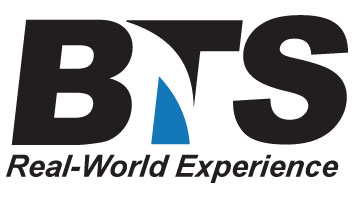| Hands-On Ericsson AXE 10 Switch Maintenance and Troubleshooting |
 |
Module 1 : Telephony Overview
- T&R, E&M
- Battery
- Analog Signals
- Digital: A/D & D/A Conversion
- PCM, T1, E1, CAS/CCS
- Stored Program Control (SPC)
- Analog & Digital Talk Paths
- AXE® Series: 10, 810, 910, GSM
Module 2 : AXE 10® Theory of Operation
- AXE Topology
- Functional Block Diagram
- PLEX, Blocks & Subsystems, DCS
- SSS: GSS Space & TSS Time Components
- Hardware Modules:
APZ: 212/xx series
Subsystems (i.e. MAU/UMB, RPH, FMS, CHS, IOG/SPG, RES/IMS CALEA)
Storage: DS/RS/PS
APT & Subsystems (SSS, CCS, bus structure, etc.)
GSS: TSM, SPM, Clock
Regional Processors (RP) - RPH
Peripherals: TSS & SSS Interfaces
LSM Lines & ETC Trunks
EMTS
Magazine Types
SLIC, SLAC, REU, SLCT/SULT
CCS incl. SS7 Concepts
RSS Remotes, ETC/STC Connections
MGW - Packet Handler
- End-to-End Call
- Review
Module 3 : I/O & TTY
- Input/Output IOG & Man-Machine
- FIOL/WINFIOL/WIOL Terminal (DOS/Win/UNIX)
- AXEUSE Windows GUI
- TMOS Utility
- Printouts: Auto & Command-Initiated
- SPS: Support Processor
- FMS: HD/FD/OD/MT & Backups SYBFP
- MCS: ALI/AT & Alarm Panel, IOLRC load reg- MML Format
- Command Code: XXYYZ
- Responses: Executed, Ordered/F1, Not Accepted
- Job Buffers (JB)
- Command Examples: MC, EX, IO commands
- Ranges
- Time: CA commands
- Practice Looking-Up Commands
- Status: WO/EX, WO/SB, MBL, HBL, CBL, ABL, etc.
- Examples
- Review
Module 5 : Documentation!
- DynaText Browser
- Modules: A-T Descriptions
- LZT (incl. LZU, LZM Series) Operations Manual
- Operational Instructions (OPI)
- LZY Software
Module 6 : Maintenance
- Listing Troubles
- Directory Numbers & SLICs
- Lines: EXSSI:SNB, ILLUP, ILLUI, ILBLI/ILBLE, etc.
- Locating a Cabinet/Magazine/Card, EXPOP
- Replacing Modules:
Power-Removal Requirements
Correct Card Extraction & Insertion
- Testing- ILLTI & SLOCI/SLOMI commands
- Alarm Modules - ALCPU, ALEXP
- Trunk Modules - ETCs
- System Backup - SYBMS, SYBFP
- Automatic Execution - IOCMP
- External Alarms - AL commands
- Traffic: IN, SQ, TR commands
- Examples
Module 7 : Troubleshooting
- NOC/SCC Interaction
- ESD Precautions
- Commands: ALLIP, ALLTC, IMHWR, REPCI, other RE, C7, NT commands
- Alarm Classes: A1, A2, A3, O1, O2 (ALCLP)
- Event Numbers
- Using the SYRIP Recovery Log
- Recoveries:
Alarm Terminal
FORLOPP Teardowns, FID
Small, Large, Reload (SYRSI)
Large/Ordinary Start vs. Start System vs. Cold Start
Module 8 : Translations Introduction
- SUL, SUS, IUP commands
- Call Trace CTRAI